Author: 1912212.eth, Foresight News
With the increasing maturity of the Ethereum second-layer network and the increasing popularity of Gas With the significant reduction in fees, these networks are showing a booming growth trend, but problems have also emerged. For example, fees and speeds will be affected by many aspects, making the user experience unsatisfactory. In this context, the importance of transaction sequencing has become increasingly prominent, becoming the key to solving transaction bottlenecks and optimizing user experience.
In April this year, Astria, a modular blockchain focusing on shared sorters, completed a US$5.5 million seed round of financing, led by Maven 11, 1kx, Delphi Ventures, Robot Ventures and others participated in the investment. Just 3 months later, Astria completed another $12.5 million in financing, led by dba and Placeholder VC, with participation from Hasu and others.
What is Astria?
Astria is developing a decentralized shared sequencer network designed to provide Rollups with fast finality, censorship resistance, composability, and decentralization .
Currently, it is more convenient, cheaper, and easier for users to use L2 to run a centralized sorter, so mainstream L2 is managed by its own team. While L2 users can submit transactions directly to L1 to bypass the sequencer, users must pay transaction gas fees to L1, and transactions may take longer to finalize.
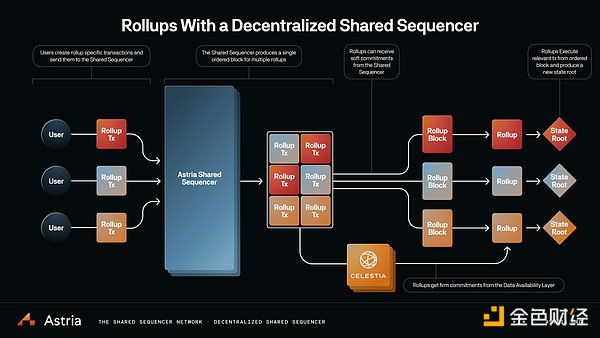
The sorter controls the sorting of transactions, and in theory it has the right not to include user transactions. The sequencer can also extract MEV from the transaction group. If there is only one sorter, the risk of centralization becomes greater.
Therefore, a decentralized shared sorter still makes sense.
How Astria works
Astria’s decentralized sorter has multiple sorter nodes , thus being able to sort Rollup transactions. In Astria's operating mode, users submit transactions to Rollups, and the transactions automatically enter the respective Rollup node memory pools, where the combiner is responsible for collecting txnx and sending it to the sorter. Finally, the sequencer aggregates the txnx into a shared block and finally sends a pre-confirmation to the user.
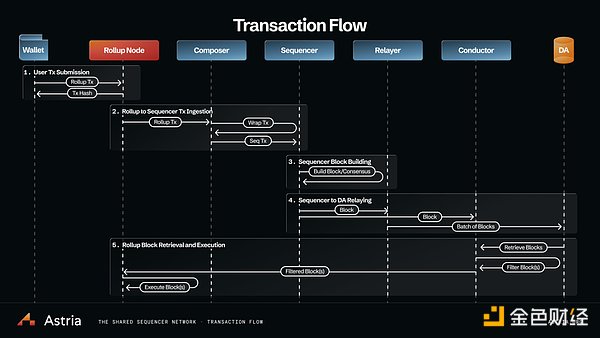
Current sorters are implemented based on specific Rollup. Astria processes blocks in batches for multiple Rollups. Data compression provides additional cost savings when publishing data to L1. The decentralized shared sequencer network incentivizes participants from multiple Rollup ecosystems to act as validators on the network.
Astria stack
The main components of Astria include 5 parts, namely combinators , ordering layer, relay, DA, and scheduler.
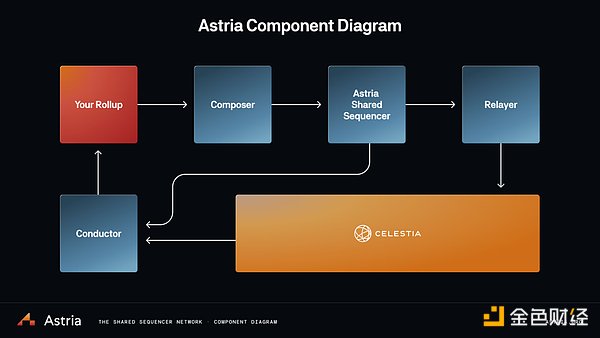
Combiner
Technical professionals may be able to take advantage of the sorting layer directly To perform better transaction sorting, but it will increase the difficulty for the vast majority of ordinary users to actually use it. Directly interacting with the sorting layer requires users to hold sorter tokens and maintain sorter wallets, both of which have a significant negative impact on the user experience.
Astria provides users with tools to abstract this complexity through combinators. The combiner is equivalent to a Gas station and bears the sorting cost of user transactions. The combiner also provides users with out-of-order guarantees, bundling transactions in the order they are received.
Ordering layer
The Astria ordering layer uses CometBFT as its consensus algorithm. A chain that supports CometBFT is able to support IBC (Inter-Blockchain Communication), which means it can cross-chain between many other chains.
The Astria sorter is unique in that the transactions it contains are not executed (lazy sorting), but are assigned to another execution engine, Rollup. A sequencer node can choose to act as a "validator," meaning it actively participates in the production and finalization of new blocks.
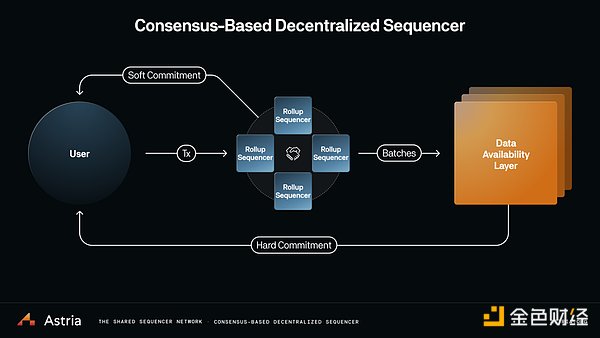
The application logic of the Astria sorter allows three main functions:
< li>Rollup data sorting
Value transfer
< /li>Changes in validator set
Medium Repeater
The function of the repeater is to get the verified chunks from the sequencer and pass them to the DA layer. Since sorters have faster block times than DA, the relay batches the sorted data from multiple sorter blocks before compressing it and submitting it to DA.
Individual sequencer blocks can also be fetched by the scheduler before the relay submits them to the DA. This enables rapid finalization of improved user experience, acting as a soft commit for the execution layer. The collection of data sent by the relay to the DA layer is used as the source of truth and is ultimately extracted from the DA for use as final finality confirmed commits in Rollup.
DA
Astria uses Celestia as the data availability layer and is all sorter network sorting The final destination of the data. Once data is written to Celestia, the transaction order is considered final and all data will be pulled from here when a new Rollup node is started.
Scheduler
The scheduler can be considered as the consensus implementation of the Rollup full node, similar to Operation node in OP Stack. The scheduler is the counterpart of the execution engine, and together they form a complete Rollup node. Its role is to connect the sequencer and DA layer to the Rollup execution layer by extracting transactions belonging to the Rollup node from each sequencer block and forwarding them to the execution layer.
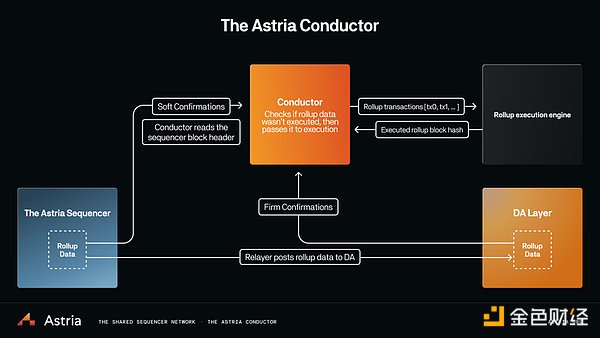
For each sorter block, extract the relevant Rollup data it needs, then verify the batch of Rollup data, wait for the verification to complete, and it will Convert this into a list of transactions and pass it to the execution engine.
 JinseFinance
JinseFinance
 JinseFinance
JinseFinance JinseFinance
JinseFinance JinseFinance
JinseFinance JinseFinance
JinseFinance JinseFinance
JinseFinance Davin
Davin JinseFinance
JinseFinance Davin
Davin The Business Times
The Business Times Cointelegraph
Cointelegraph